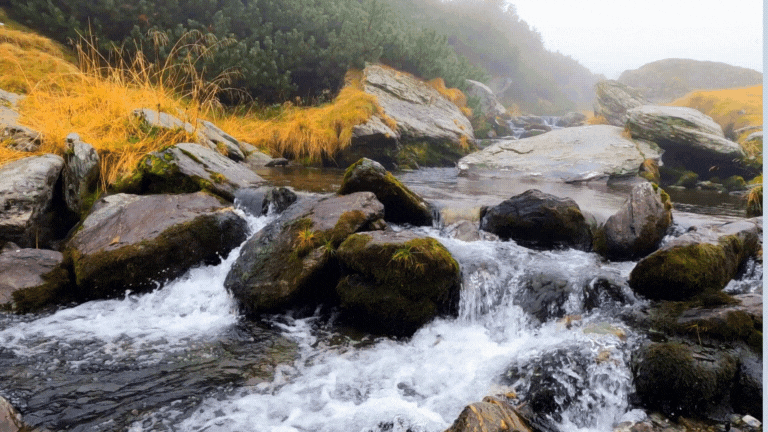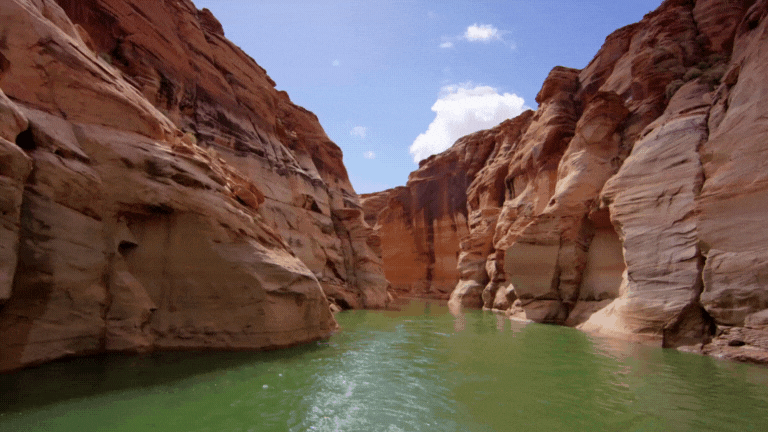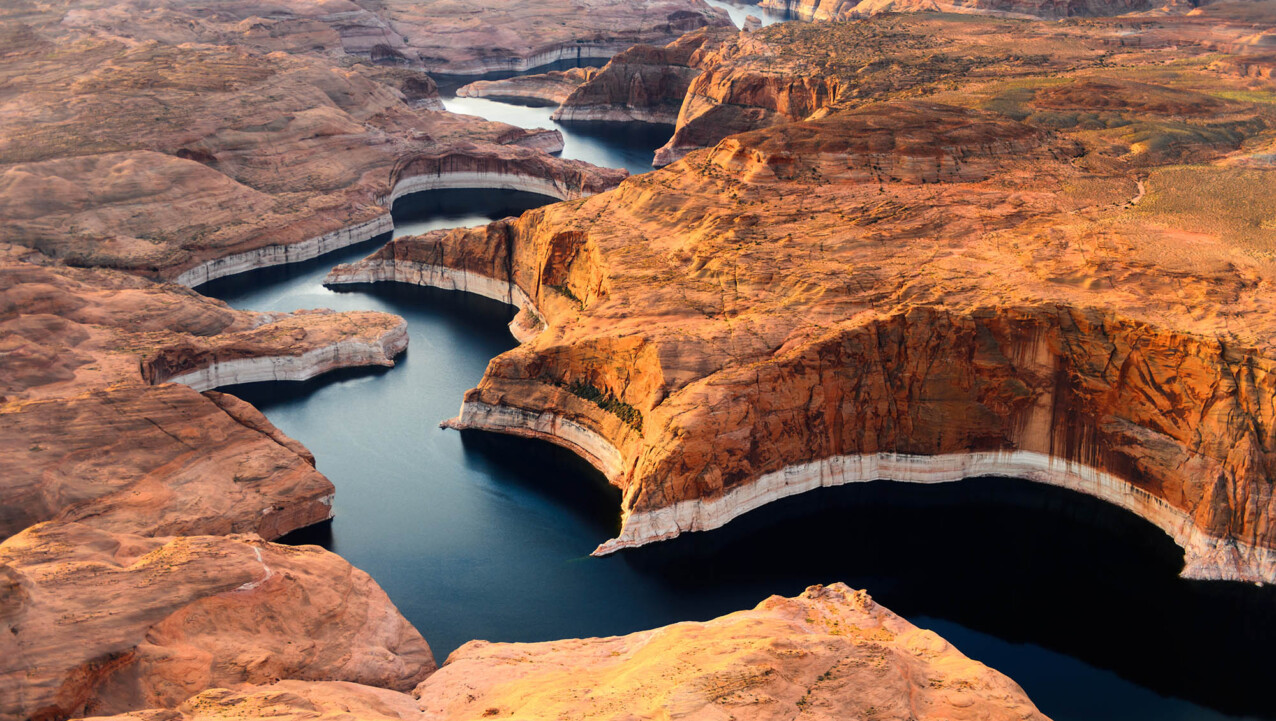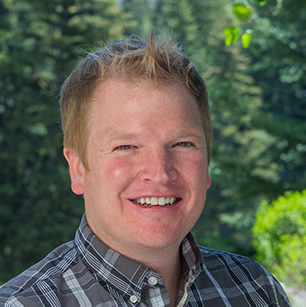July 27, 2023
Climate change, drought, and growing water demands have pushed the Colorado River to the brink. The century-old foundation governing the river is crumbling. Water managers, elected officials, and the federal government have tried to patch the growing cracks in the foundation with numerous short-term agreements over the last 20 years. Despite their efforts, water levels in Lake Mead and Lake Powell, the river’s two major reservoirs and the West’s most important water storage reserve, have continued to drop precipitously. Even after the recent wet winter, the system that delivers water to much of the West remains in crisis. But it doesn’t have to be this way. We have a narrow window of opportunity to repair the foundation. The survival of the Colorado River and the West depends on our ability to implement long-term, forward-thinking strategies to conserve water and keep our rivers healthy and flowing.
The Bureau of Reclamation has kicked off the process of working with the Colorado River Basin states and Tribes, along with municipalities, non-governmental organizations, and other stakeholders to develop a plan for managing the river after 2026, when current guidelines expire. At WRA, we believe the blueprint for the river’s policy foundation must include five principles. We outline these principles below along with just a few of the many strategies we can implement to protect the Colorado River Basin.

Principle 1. Cut water consumption by 25%
Cities, farms, ranches, and businesses throughout the Colorado River Basin must take steps to cut water consumption by at least 25% over the next few years, and we should take large new non-Tribal water development (activities that take more water out of rivers) off the table until a sustainable path has been identified.
WHY THIS IS NEEDED
Over the past several years, the annual demand for water from the Colorado River outstrips the available supply by approximately 1.5 million acre-feet. That is more than twice the annual residential water use for the entire Colorado River Basin, or enough water to meet the annual needs of roughly 15 million people. The situation will worsen if we continue on our current trajectory — by 2060 we could face an annual water shortage closer to 3.8 million acre-feet. Collaboration to reduce water demand is the only way forward. One industry, region, or water use sector cannot bear this burden alone.
At the same time, Basin Tribes have long been denied access to their fair share of water from the river. Some Tribal water rights are unquantified or unresolved through a court decree or settlement such that their water right does not have formal legal recognition. Even when Tribal water rights are formally recognized, Tribes are often precluded from accessing their water due to a lack of infrastructure, insufficient federal funding, and legal restrictions on how they can use their water. This unused water is often consumed by those downstream without compensating the Tribes. We need to ensure that Tribes can access their water and are equal players in identifying strategies to sustainably manage water in the Basin.
HOW WE GET THERE
There is a laundry list of conservation strategies to bring water supply and demand back into balance. For example, several cities and large water providers in the Basin have already agreed to conserve water by expanding water efficiency programs, replacing non-functional turf with waterwise landscaping, increasing water reuse and recycling where feasible, and collaborating with other water users in the Basin. In addition, the Gila River Indian Community is leveraging federal funding to keep water in the Colorado River by expanding water reuse and other conservation measures. We must ensure that these municipal conservation efforts are expedited throughout the Basin. We should also support communities in integrating water and land use planning. Programs like Growing Water Smart, which are being implemented throughout the Basin, offer a valuable framework for local leaders and staff addressing water concerns.
We can also implement water saving strategies in the agriculture sector, which takes up nearly 80% of the water consumed in the Colorado River Basin. If you have eaten a salad in the wintertime anywhere in the U.S., chances are those leafy greens were grown with Colorado River water. We need to find ways to conserve water while preserving farming and ranching in the Basin. The federally funded System Conservation Program (SCPP) is one example of a program to incentivize conservation by paying water users to leave water in the river. Providing financial incentives and supporting willing agricultural producers in temporarily fallowing fields, transitioning to less water-intensive crops, upgrading to more efficient irrigation systems, and practicing regulated deficit irrigation (watering crops slightly less at certain points in the growing season) can provide water savings without permanently retiring land from production, all while sustaining rural economies and keeping food on our plates.
Industry will also need to play a role. Many fossil fuel power plants consume enormous amounts of water compared to renewable energy sources like wind and solar. Increasing energy efficiency, expanding water-efficient renewable energy, retiring water-intensive coal plants, and recycling wastewater for power plant cooling systems are just a few strategies to meet our energy and water needs.

Principle 2. Account for current and future conditions
Colorado River policies must reflect the fact that there is less water in the river today, and there will be less water in the river in the future due to a warming, drying climate. These policies must be proactive, equitable, and sustainable for all states, Tribes, and stakeholders.
WHY THIS IS NEEDED
Flows in the Upper Colorado River Basin have decreased by 20% since 2000 and conditions are only expected to worsen as the West becomes more arid. Actions to address shortages on the river are often too small and implemented too late.
Water managers often only consider reservoir levels when deciding on actions to address looming water shortages, but this doesn’t tell the whole story. The reservoirs are like a giant bathtub. The river fills the tub and the communities in the Colorado River Basin drain the tub as they use water. The water level in the tub tells us how much water is left at a single point in time, but it does not tell us how quickly (or slowly) the tub is refilling. River flows are variable and declining as the climate changes. After a year of snow and rain, water readily flows out of the faucet and into the tub. During dry years, it is barely a trickle. Over the long term, climate change is slowly closing the tap. We cannot plan ahead without knowing how fast the river is refilling the tub.
HOW WE GET THERE
The Bureau of Reclamation must consider river flow data, in addition to reservoir levels, when making important management decisions. Actions to address water shortages must be taken sooner — before we are in crisis. We need to incorporate realistic climate projections and forecasts for future water demand into management guidelines. Water demand forecasts must recognize that, while Basin states will need to share water shortages, Tribes have the right to, and likely will, increase their future water use to rectify inequities. Proactive policies and more frequent evaluation of operating guidelines for the Colorado River are needed to respond to changes on the river and ensure access to water.


Principle 3. Maintain healthy river flows
Healthy river flows must be maintained and restored, and reservoir water releases timed to support irreplaceable ecosystems and recreational uses along the Colorado River and its tributaries.
WHY THIS IS NEEDED
The Colorado River flows through 11 national parks and monuments, including the Grand Canyon, as it makes its way through the Basin. The river and its shores support roughly 400 bird species, river otters, beavers, and numerous fish, including four species that are found nowhere else on Earth. Millions of people flock to the Colorado River each year to enjoy hiking, fishing, rafting, and wildlife viewing opportunities. A healthy river is also essential to the cultural and traditional practices of many Indigenous people in the Basin. When the Colorado River’s water was divvied up a century ago, little or no attention was paid to the needs of the surrounding ecosystems. Today, dams, reservoirs, and pipelines have drastically altered the river’s flows and critical wildlife habitat.
HOW WE GET THERE
There are several ways that we can maintain healthy river flows while also meeting the needs of downstream users. River managers can be strategic in how they move water between reservoirs. For example, during high flow experiments, water releases are timed to mimic periodic natural flooding in the Grand Canyon. These releases redistribute sediment and maintain important riverside habitats, while transporting water from Lake Powell to Lake Mead. Similar environmental releases have occurred upstream. In 2022, water levels in Lake Powell dropped so dramatically that water needed to be delivered from upstream storage facilities to prop up the reservoir to protect facilities and continue generating hydropower. WRA worked with the U.S. Fish and Wildlife Service to time the release of this water to benefit the environment, resulting in a win-win for fish, anglers, boaters, and downstream users. Policies for managing the reservoirs going forward must coordinate releases to provide additional flows when needed during dry months and maximize environmental co-benefits.
 Principle 4. Include Tribes in decision-making and ensure water access
Principle 4. Include Tribes in decision-making and ensure water access
The 30 federally recognized Basin Tribes, many whose water rights, infrastructure needs, and values have long been put on the back burner, must be included in the decision-making process and have equitable access to clean drinking water.
WHY THIS IS NEEDED
Tribes have long been excluded from Colorado River negotiations. Twenty-two Tribes have recognized rights to use 3.2 million acre feet of Colorado River water each year while twelve have either partial or wholly unresolved water rights. Even those with resolved water rights have been precluded from using their full share of water from the Colorado River due to lack of infrastructure, insufficient federal funding, and restrictions on how they can access and use their water. Tribal communities throughout the Basin have been left without access to clean running water as a result. For example, on the Navajo Nation, an estimated 30% to 40% of households are not connected to a public water system and must haul water for their families at an enormous cost.
HOW WE GET THERE
Tribes must have a seat at the decision-making table in Colorado River negotiations alongside the seven states and the Bureau of Reclamation. Continued engagement is needed to ensure that Tribes have meaningful and timely opportunities to shape decisions. Water demand forecasts used to make management decisions need to incorporate Tribal water rights, including those that are currently undeveloped or unresolved. Tribes must be supported in fully developing their water rights and the infrastructure needed to access clean water. Tribes must also be able to use their water in ways that they believe will benefit their communities and should receive fair compensation for their water that is used by others.
 Principle 5. Include impacted people, parties, and stakeholders
Principle 5. Include impacted people, parties, and stakeholders
Decision-making forums should be transparent, accessible, meaningfully inclusive, and enable input from a broad range of impacted people, conservation groups, and other important stakeholders.
WHY THIS IS NEEDED
The entire Basin must work cooperatively if we are to secure the future of our communities and the Colorado River. In the past, stakeholders may have been informed of decision points, but they were not always given the opportunity to meaningfully participate, share how they value the river, and provide ideas for sustainable management. The river has suffered as a result with management strategies narrowly focusing on how much water we can take out of the Colorado River and failing to adequately consider the ecological, spiritual, cultural, and recreational value of leaving water in the river. We need all-hands-on-deck to address the Colorado River crisis and find creative solutions to ensure the river’s long-term sustainability.
HOW WE GET THERE
Future management decisions, including the development of post-2026 operating guidelines for the river, must incorporate the values and ideas of a wide range of Basin partners, stakeholders, and the public.
In addition, clear avenues must be provided for stakeholders to provide input early in the decision-making process when it can be fully considered. A transparent process for participation might include holding stakeholder meetings each quarter that allow for virtual participation, allowing stakeholders to submit questions and documents in advance, and creating a website to house meeting schedules, agendas, notes, and recordings.

Short-term fixes over the last 20 years have failed to address the scale of the challenge confronting the Colorado River. Decisions made over the next few years will determine the future of the river and the West as we know it. We must use this historic opportunity to put in place a forward-thinking plan that will protect the river and all who rely on it. While the hundred-year-old policy foundation may be crumbling, we have the tools and opportunity to fix it. We can reimagine a new, sustainable future for the Colorado River if we act now.





